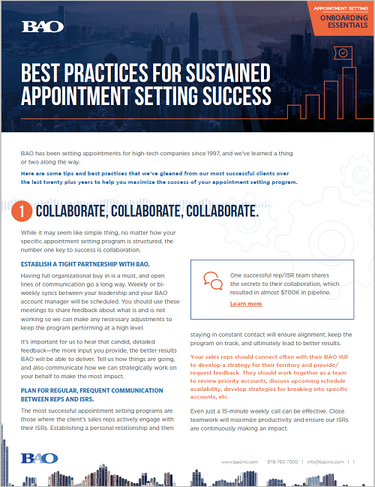Best Practices for Sustained Appointment Setting Success

And we’ve learned a thing or two along the way. Here are some tips and best practices that we’ve gleaned from our most successful clients over the last twenty plus years to help you maximize the success of your appointment setting program.
While it may seem like simple thing, no matter how your specific appointment setting program is structured, the number one key to success is collaboration.
One successful rep/ISR team shares the secrets to their collaboration, which resulted in almost $700K in pipeline.
In order to understand the success of the program, you need visibility into the quality and viability of each opportunity, and you need to be able to measure pipeline generated by the program in both early and late stages of the sales cycle. This type of visibility requires cooperation and buy in across various levels of your organization, from sales reps on the front lines all the way through to marketing, sales operations, and sales leadership.
We’re all operating in a dynamic environment: new reps come on board, messaging evolves, your targets shift. Your program needs to remain fresh so it can continue to perform well. Consistent updates in these areas will help BAO create impactful at-bats for your sales team.